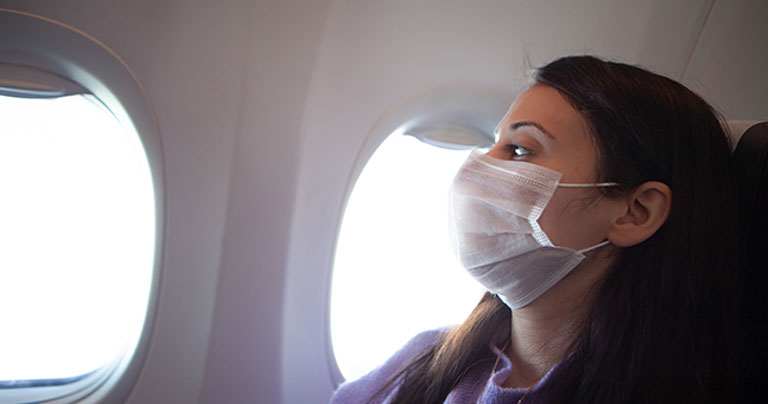
The International Air Transport Association (IATA) has issued a statement in support of wearing face masks for passengers and crew while on board aircraft, as a critical part of a layered approach to biosecurity to be implemented temporarily when people return to travelling by air. However, the association has said that it opposes social distancing measures that would leave “middle seats” empty.
According to IATA, evidence suggests that the risk of transmission on board aircraft is low. Wearing masks by passengers and crew will reduce the already low risk, while avoiding the dramatic cost increases to air travel that onboard social distancing measures would bring.
Alexandre de Juniac, IATA’s Director General and CEO, commented: “The safety of passengers and crew is paramount. The aviation industry is working with governments to re-start flying when this can be done safely. Evidence suggests that the risk of transmission on board aircraft is low. And we will take measures – such as the wearing of face coverings by passengers and masks by crew – to add extra layers of protection. We must arrive at a solution that gives passengers the confidence to fly and keeps the cost of flying affordable. One without the other will have no lasting benefit.”
Measures to reduce the already low risk of onboard transmission
IATA recommends mandatory face coverings for passengers and masks for crew as one of several actions to reduce the already low risk of contracting COVID-19 on board aircraft.
In addition to face coverings, the layers of temporary biosecurity measures being proposed include:
- Temperature screening of passengers, airport workers and travellers,
- Boarding and deplaning processes that reduce contact with other passengers or crew;
- Limiting movement within the cabin during flight;
- More frequent and deeper cabin cleaning;
- Simplified catering procedures that lower crew movement and interaction with passengers.
IATA says that there are several plausible reasons why COVID-19, which is spread primarily by respiratory droplets, has not resulted in more on board transmission, and is different from other modes of public transport:
- Passengers face forward with limited face-to-face interactions
- Seats provide a barrier to transmission forward to aft in the cabin
- Air flow from ceiling to floor further reduces the potential for transmission forward or aft in the cabin, moreover, air flow rates are high and not conducive to droplet spread in the same way as in other indoor environments
- High Efficiency Particulate Air (HEPA) filters on modern aircraft clean cabin air to operating theatre quality, further assisted by high levels of fresh air circulation
Moreover, even if implemented keeping the ‘middle seat’ open will not provide the recommended separation for social distancing to be effective. Most authorities recommend 1m-2m while the average seat width is less than 50 cm.
“The cabin environment naturally makes transmission of viruses difficult for a variety of reasons. That helps explain why we have seen little evidence of onboard transmission. In the immediate term, our aim is to make the cabin environment even safer with effective measures so that passengers and crew can return to travel with confidence. Screening, face coverings and masks are among the many layers of measures that we are recommending. Leaving the middle seat empty, however, is not,” said de Juniac.
Economic impact
According to IATA, calls for social distancing measures on aircraft would fundamentally shift the economics of aviation by slashing the maximum load factor to 62%. That is well below the average industry breakeven load factor of 77%.
With fewer seats to sell, unit costs would rise sharply. Compared to 2019, air fares would need to go up dramatically—between 43% and 54% depending on the region—just to break even.
“Airlines are fighting for their survival. Eliminating the middle seat will raise costs. If that can be offset that with higher fares, the era of affordable travel will come to an end. On the other hand, if airlines can’t recoup the costs in higher fares, airlines will go bust. Neither is a good option when the world will need strong connectivity to help kick-start the recovery from COVID-19’s economic devastation,” said de Juniac.
The circumstances surrounding COVID-19 are continuously evolving. Our friends at APEX have a dedicated COVID-19 page, which they’ll be updating regularly to help keep you up-to-date on how the novel coronavirus is impacting the aviation industry. Visit the page for the very latest news >>





